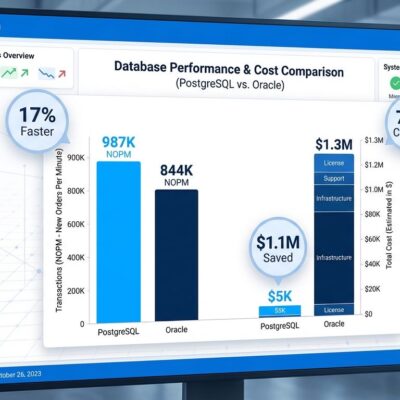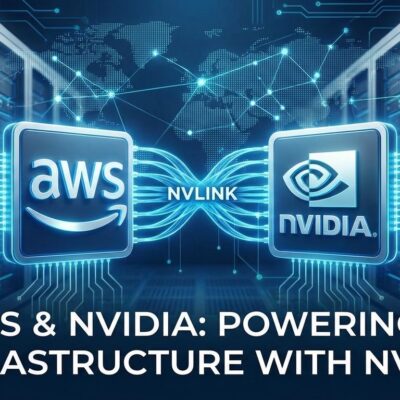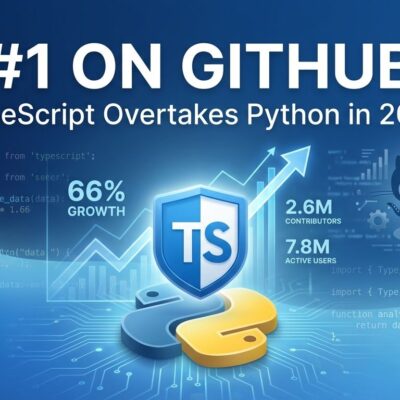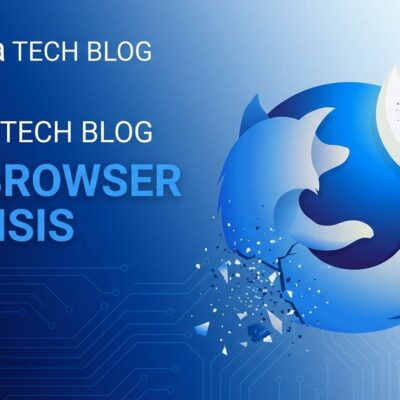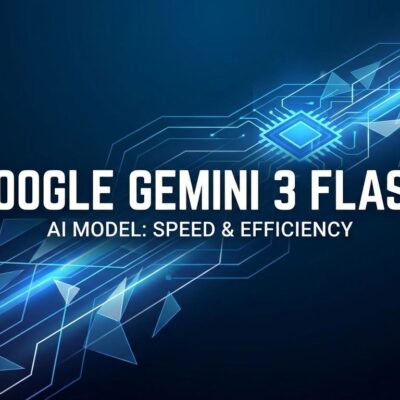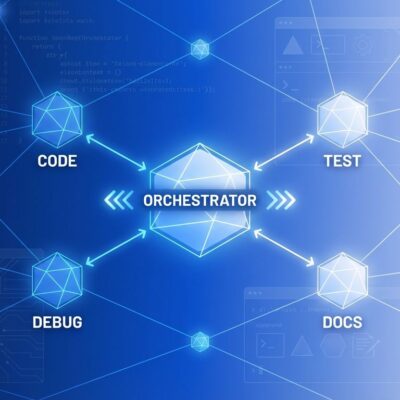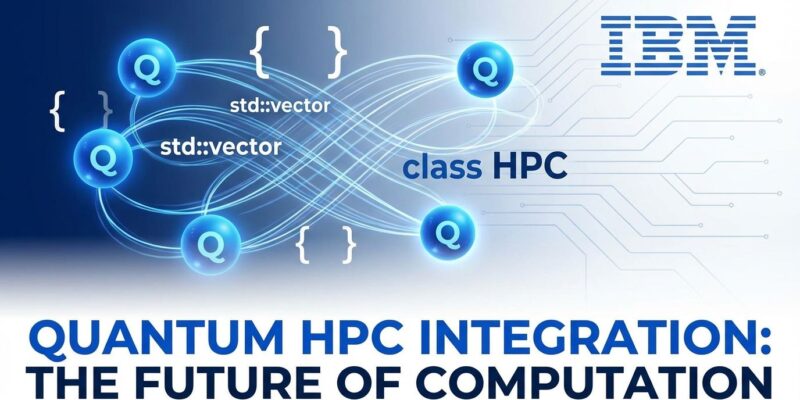
IBM announced a C++ interface to its Qiskit quantum computing SDK on November 12, 2025, at the Quantum Developer Conference in Atlanta, removing the Python-only barrier that blocked millions of C++ developers from accessing quantum systems. The new C-API enables quantum programming directly in high-performance computing environments where C++, Fortran, and MPI dominate—with circuit construction running 10-20x faster than Python and native integration into enterprise workflows without Python runtime dependencies.
This solves quantum computing’s silent adoption problem. HPC centers—where the computational firepower lives—couldn’t use quantum systems because of the Python language lock-in. Finance teams running C++ trading systems, drug discovery researchers using C++ molecular simulations, and materials scientists with Fortran-based electronic structure calculations can now integrate quantum algorithms into existing codebases. No infrastructure rewrites required.
The Cultural Barrier No One Talks About
The C++ interface isn’t just about performance—it removes a cultural divide that prevented quantum adoption in enterprise HPC. High-performance computing centers use C++, Fortran, and MPI (Message Passing Interface) with batch job schedulers like SLURM and PBS. Quantum computing has been Python-dominated. This language mismatch created an invisible barrier worth billions in inaccessible infrastructure.
QuEra’s blog documented the friction: “A profound challenge exists in bridging the cultural gap between the HPC community, which favors compiled languages (C, C++, Fortran), MPI, and rigid batch execution, and the quantum community, which predominantly uses Python-based SDKs and notebooks.” That gap prevented national labs, supercomputing centers, and enterprise HPC teams from deploying quantum workloads. They couldn’t rewrite infrastructure just to run Python quantum libraries.
IBM’s C++ interface enables native quantum workflows. Circuits built in C++ compile to binaries compatible with HPC job schedulers—no Python runtime required. Performance advantage is measurable: 10-20x faster circuit construction for 1000-qubit GHZ states, with latency dropping from milliseconds (Python) to microseconds (C++). More importantly, quantum jobs now integrate into the same deployment pipelines, monitoring systems, and DevOps workflows HPC teams already use.
Measurable Progress After Years of Vague Promises
Quantum has a “boy who cried wolf” problem. Promised for decades, always “5 years away,” the industry faces justified skepticism. IBM is addressing credibility with concrete numbers instead of vague marketing. The November announcements delivered measurable improvements: 24% accuracy increase with dynamic circuits at 100+ qubit scale, 100x cost reduction for extracting accurate results via HPC-accelerated error mitigation, and the Nighthawk processor specifications for delivery by end of 2025.
IBM Quantum Nighthawk features 120 qubits with 218 tunable couplers (20% more than the previous generation), supporting 5,000 two-qubit gates and 30% more circuit complexity. The roadmap extends to 7,500 gates by end 2026, 10,000 gates in 2027, and 15,000 gates in 2028 with systems reaching 1,000+ qubits. Manufacturing advancements at the 300mm wafer fabrication facility cut processor development time by 50% and enabled a 10x increase in quantum chip physical complexity.
These aren’t theoretical gains. The 24% accuracy improvement and 100x cost reduction in error mitigation are production metrics enterprises can validate. IBM’s public commitment to quantum advantage by end of 2026 creates accountability—the timeline is public, and community-led verification prevents backtracking.
Enterprises Deploying Quantum for Real Business Value
Follow the money. HSBC achieved a 34% improvement in bond trading predictions using IBM’s Heron quantum computer in September 2025. That translates to millions in profit—enterprises don’t deploy expensive quantum systems for science experiments. Similarly, St. Jude Children’s Research Hospital and the University of Toronto achieved the first successful quantum drug discovery project with experimental validation, outperforming classical machine learning models in identifying promising therapeutic compounds.
IonQ claimed quantum advantage in drug discovery and chemistry simulations in October 2025. AstraZeneca collaborated with AWS, IonQ, and NVIDIA on quantum-accelerated chemistry workflows for small-molecule drug synthesis. Moderna used a hybrid quantum-classical approach to simulate mRNA sequences. These aren’t proofs-of-concept—they’re business-critical deployments delivering measurable results.
The C++ interface accelerates this adoption trajectory. Finance quants and drug discovery researchers no longer need to bridge the Python-C++ gap. Quantum algorithms integrate directly into their existing pipelines, reducing deployment friction and enabling faster experimentation.
2026: Quantum’s Make-or-Break Year
IBM publicly commits to verified quantum advantage by end of 2026. Jay Gambetta, Director of IBM Research, stated: “Quantum advantage will be achieved by the end of 2026, provided that the quantum and HPC communities work together.” There’s no wiggle room. IBM, Algorithmiq, the Flatiron Institute, and BlueQubit launched a community-led quantum advantage tracker to systematically verify claims.
Verification criteria are rigorous: quantum computations must have validated correctness AND demonstrate superior efficiency, cost-effectiveness, or accuracy over classical computation alone. Not just “faster”—provably better. The public roadmap holds IBM accountable. If they deliver, quantum computing transitions from research to enterprise production. If not, the industry risks a “quantum winter” with funding collapse and investor exodus.
The stakes are high. Quantum computing companies raised $3.77 billion in equity funding during January-September 2025—nearly triple the $1.3 billion raised in all of 2024. The market reached $1.8-3.5 billion in 2025, with projections of $5.3 billion by 2029. McKinsey estimates potential value of $200-500 billion in life sciences alone by 2035. The C++ HPC integration is part of IBM’s strategy to hit the 2026 target by bringing quantum to the developers and infrastructure where computational power lives.
Who Benefits: HPC Developers, Finance Quants, Drug Discovery
The C++ interface targets specific high-value audiences. HPC developers at national labs (Argonne, Oak Ridge, Lawrence Livermore) and supercomputing centers can now integrate quantum into C++/Fortran + MPI workflows. Financial quants building C++ trading systems, risk models, and derivatives pricing engines get native quantum access—validated by HSBC’s 34% bond trading improvement.
Drug discovery researchers running C++ molecular simulations (Moderna, Biogen, AstraZeneca) can embed quantum algorithms without rewriting infrastructure. Materials scientists using C++/Fortran for battery chemistry, catalyst design, superconductor discovery, and semiconductor research gain quantum capabilities. The Quantum Scaling Alliance (HPE and partners) is driving HPC-quantum convergence to make hybrid workflows standard practice.
This isn’t quantum for everyone—it’s quantum for the developers who can actually use it. HPC centers have the infrastructure, finance has the budget, drug discovery has the use cases where quantum advantage is proven. The C++ interface removed the last barrier preventing these high-value adopters from deploying quantum systems at scale.
Key Takeaways
- IBM’s C++ interface removes the Python barrier preventing HPC adoption of quantum computing, enabling native integration with enterprise C++/Fortran workflows at national labs, finance firms, and drug discovery operations
- Measurable progress: 24% accuracy boost, 100x error mitigation cost reduction, and concrete hardware roadmap (Nighthawk 120 qubits delivered end 2025, path to 1,000+ qubits by 2028)
- Quantum delivering ROI: HSBC 34% bond trading improvement, St. Jude experimental drug discovery validation—enterprises deploying for business-critical applications with measurable results
- 2026 is quantum’s credibility test: IBM publicly commits to verified quantum advantage with community-led tracking, creating accountability and preventing “quantum winter” from unsubstantiated claims
- C++ opens quantum to high-value adopters: finance quants, drug discovery researchers, HPC developers at national labs—trillions in existing infrastructure can now integrate quantum without Python rewrites



